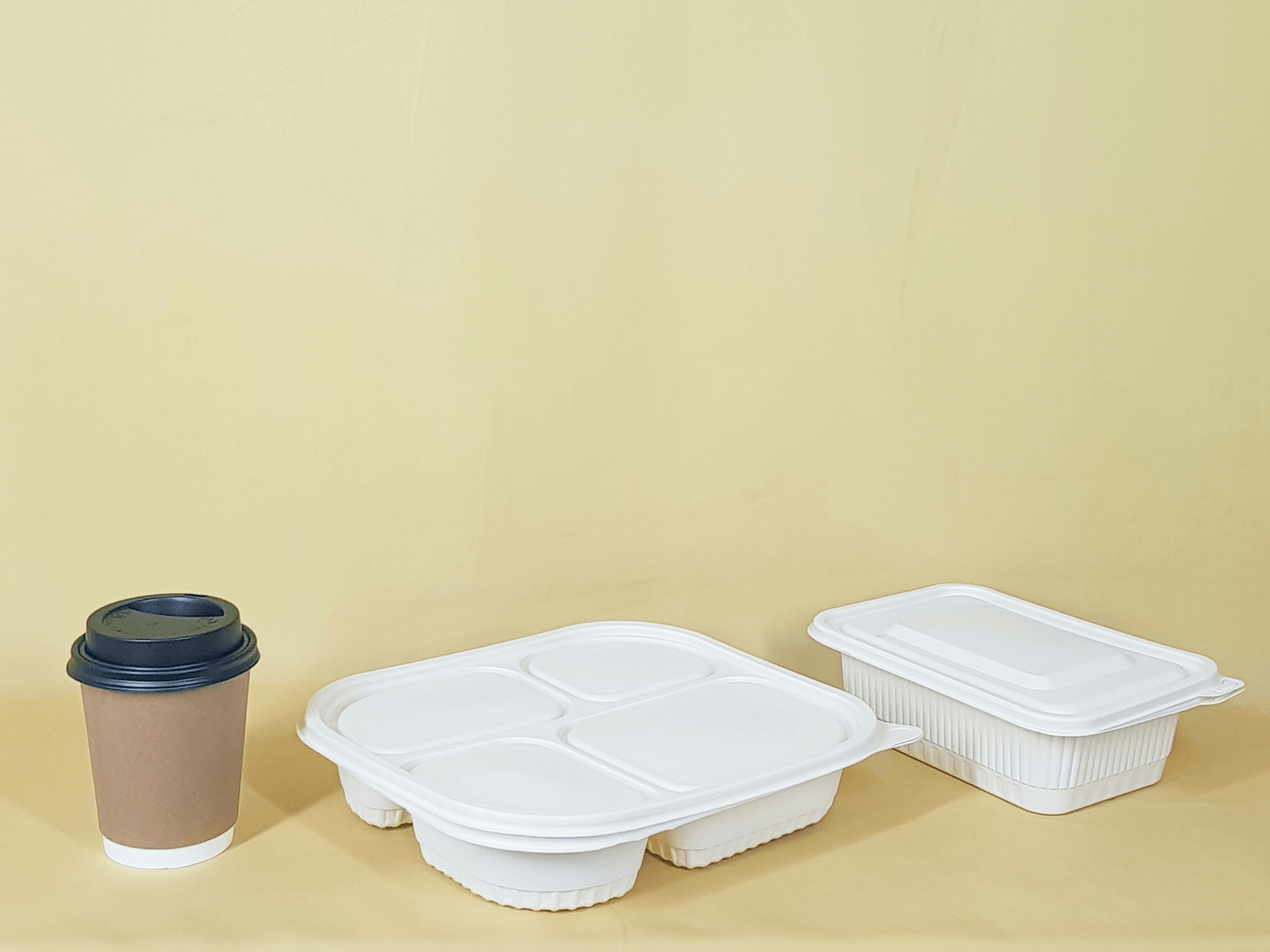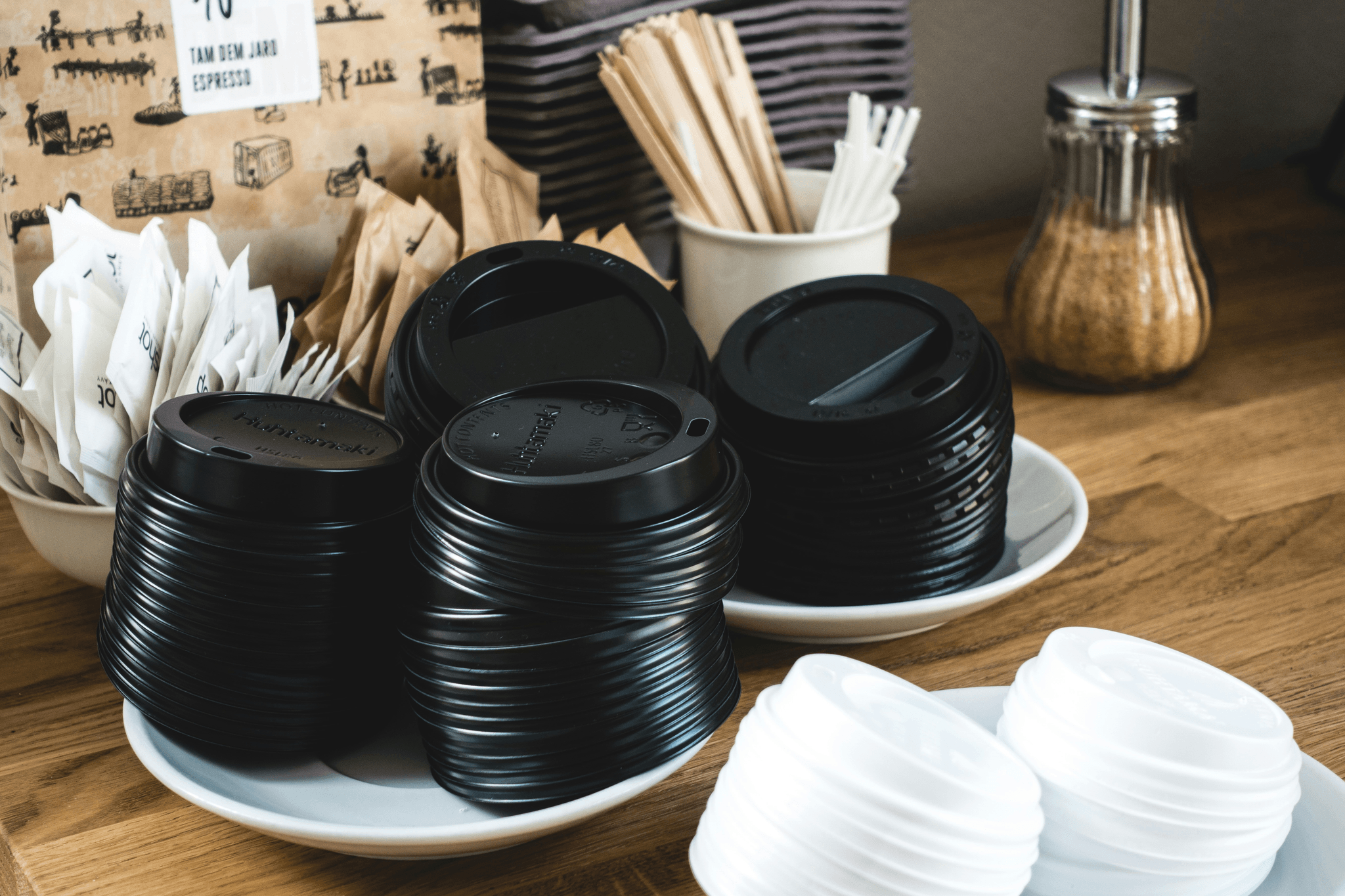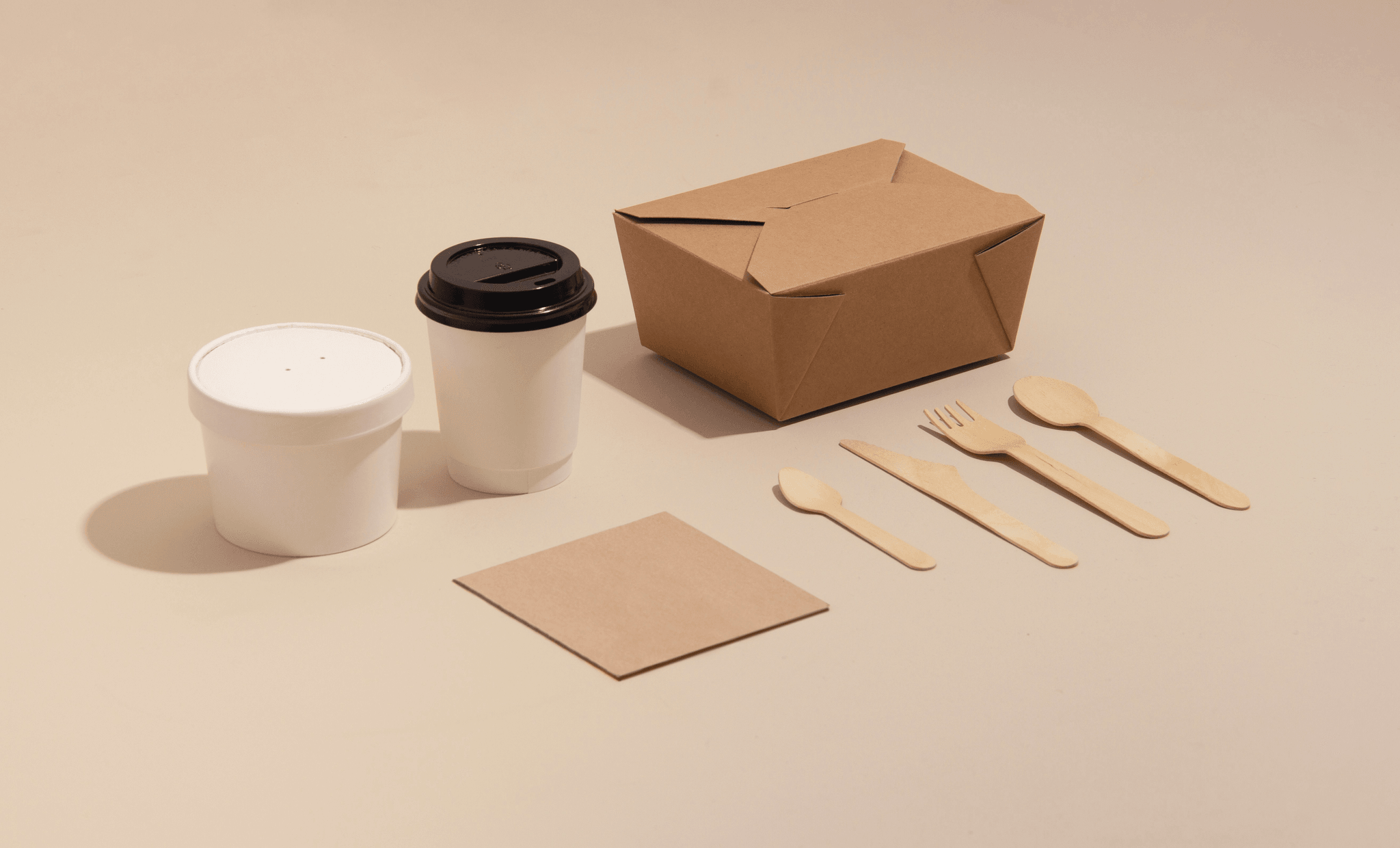Introduction

In today's fast-paced world, disposable food containers have become a staple for restaurants, caterers, and home cooks alike. The convenience they offer is undeniable, allowing us to enjoy meals on the go without the hassle of washing up afterward. But with a variety of options available, understanding the different types of disposable packaging materials can help you make informed choices that suit your needs.
Why Choose Disposable Food Containers
Choosing disposable food containers is not just about convenience; it's also about efficiency and safety. They provide a practical solution for serving food in various settings while minimizing cross-contamination risks. From takeaway containers to serving cups, these products ensure that your culinary creations remain fresh and appealing until they're ready to be enjoyed.
Benefits of Understanding Material Types
Diving into the world of disposable product material types opens up a treasure trove of insights that can enhance your packaging decisions. Each material has its unique properties, affecting everything from insulation to durability and environmental impact. By familiarizing yourself with these differences—be it polypropylene containers or paper-based options—you'll be better equipped to select the right type for your specific needs.
Overview of Popular Container Sizes
When it comes to takeaway containers and portion cups, size matters! Knowing the popular container sizes helps you serve just the right amount without waste or excessive overflow. Whether you're catering an event or packing lunches at home, understanding these sizes will streamline your meal prep process and keep everything neatly organized.
Types of Disposable Food Containers

Familiarizing Yourself with Takeaway Containers
Takeaway containers are a staple in the world of disposable food packaging. They come in various shapes and sizes, designed to hold everything from salads to pasta dishes, ensuring your meals stay fresh on the go. These containers are typically made from materials like polypropylene or paper, making them versatile and convenient for both consumers and businesses.
The most common takeaway containers include clamshells and hinged boxes, which offer secure closures that prevent spills during transport. Additionally, many eateries opt for eco-friendly options that utilize biodegradable materials as part of their commitment to sustainability. Understanding these types of disposable packaging materials is crucial for selecting the right container for your culinary creations.
Exploring Portion Cup Varieties
Portion cups are another essential type of disposable food container that caters specifically to smaller servings or condiments. These little gems come in a variety of sizes, perfect for sauces, dressings, or even dessert samples—think mini parfaits! Available in plastic or paper options, portion cups provide an easy way to manage serving sizes while maintaining cleanliness.
One popular choice among restaurants is the polypropylene portion cup due to its durability and resistance to leaks. Whether you're serving up dips at a party or offering customers a taste test at your café, these containers ensure every bite is just as delightful as intended. By exploring different types of disposable packaging materials like these portion cups, you can elevate your service game significantly.
Understanding Serving Cups and Uses
Serving cups might not be the first thing that comes to mind when discussing disposable food containers, but they play an invaluable role in many dining experiences. Often used for beverages or desserts such as ice cream sundaes or fruit salads, these cups vary widely in size and material composition—ranging from plastic to eco-friendly fiber-based options.
The versatility of serving cups allows them to fit seamlessly into any menu style—from casual street food vendors offering drinks on-the-go to upscale restaurants presenting desserts elegantly plated within a cup format. As you become familiar with the different types of plastic packaging explained here alongside other materials available for serving purposes, you'll find endless possibilities for presentation and convenience.
Disposable Product Material Types

Each material offers its own set of advantages and disadvantages, impacting not only functionality but also environmental considerations. Let’s dive into the details of these materials, focusing on paper and plastic containers, polypropylene options, and the eco-friendliness of fiber-based materials.
Analyzing Paper vs. Plastic Containers
Paper containers are often lauded for their biodegradability and recyclability, making them a popular choice among environmentally conscious consumers. These takeaway containers are typically made from renewable resources, which can be an appealing factor for businesses looking to enhance their sustainability practices. On the flip side, plastic containers are known for their durability and versatility; they can withstand various temperatures and maintain food freshness longer than many paper options.
However, when comparing these types of disposable packaging materials, it’s essential to consider how each performs in different scenarios. For instance, while paper is great for dry items or cold foods like salads, plastic shines with hot meals or liquids due to its moisture resistance. Ultimately, your choice between paper and plastic will depend on your specific needs—whether that’s eco-friendliness or practicality.
Polypropylene Containers Explained
Polypropylene containers represent a fascinating category within the realm of disposable product material types. Known for their clarity and strength, these containers are often utilized in settings where presentation matters—think takeout salads or deli items displayed enticingly in serving cups. Their ability to hold both hot and cold foods makes them incredibly versatile; you might find them being used for everything from steaming hot pasta dishes to chilled desserts.
One key feature that sets polypropylene apart from other plastics is its high melting point; this means you can confidently microwave your leftovers without worrying about harmful chemicals leaching into your food. Plus, they have a lower environmental impact compared to some other plastics if recycled properly—though recycling facilities may not always accept them due to contamination issues with food residues. Understanding the benefits of polypropylene can help you make smarter choices when stocking up on takeaway containers.
The Eco-Friendliness of Fiber-Based Materials
Fiber-based materials have emerged as champions in the quest for sustainable disposable packaging solutions! These biodegradable options include products made from sugarcane pulp or bamboo fibers—both renewable resources that leave a minimal carbon footprint during production. Not only do they break down naturally over time but they also offer excellent insulation properties; this means your hot meals will stay warm longer without compromising quality.
Choosing fiber-based takeaway containers aligns well with current trends toward eco-conscious dining experiences; many consumers actively seek out brands that prioritize sustainability in their packaging choices. However, it's crucial to ensure that these products are certified compostable or biodegradable by reputable organizations so you know you're truly making an environmentally friendly decision! By opting for fiber-based serving cups instead of traditional plastics or styrofoam options, you're contributing positively towards reducing waste while still enjoying practical solutions for food storage.
Different Types of Plastic Packaging Explained

The Lowdown on Common Plastics
In the realm of disposable product material types, plastics reign supreme due to their versatility and affordability. Common plastics include polyethylene (PE), polypropylene (PP), polyethylene terephthalate (PET), and polystyrene (PS). Each type has its own set of properties, making them suitable for different applications—from sturdy serving cups to lightweight takeaway containers.
Polyethylene is often used for bags and wraps, while polypropylene is known for its durability in food containers. PET is popular for its clarity and strength, making it ideal for beverages and some food packaging. On the other hand, PS is commonly found in foam containers but raises questions about environmental impact due to limited recyclability.
Pros and Cons of PET and PS Containers
When weighing your options between PET and PS containers, it's essential to consider their benefits and drawbacks as part of your disposable food container strategy. PET containers are lightweight yet strong, providing excellent barrier properties that keep food fresh longer. However, they can be more expensive than other types of disposable packaging materials.
In contrast, PS containers are often more affordable but come with significant downsides—namely their environmental impact due to poor recyclability rates. While they may be great for holding hot soups or salads in takeaway settings, their long-lasting nature means they contribute significantly to landfill waste if not disposed of properly. Therefore, businesses must weigh cost-effectiveness against sustainability when choosing between these two common types.
Recyclability Issues in Plastic Packaging
Recyclability issues pose a significant challenge when dealing with different types of plastic packaging explained within the context of today’s eco-conscious market. Many consumers are eager to recycle but find themselves confused by varying recycling guidelines that differ from one municipality to another. For instance, while some polypropylene containers can be recycled easily at specialized facilities, many others end up discarded simply because people don’t know how or where to recycle them properly.
PET is generally accepted more widely than PS due to its higher demand in recycling streams—making it a better option if you're concerned about sustainability in your takeaway container choices. Ultimately, understanding these recyclability issues will empower you—and your customers—to make smarter decisions regarding disposable product material types that align with eco-friendly practices.
Choosing the Right Size for Your Needs

When it comes to disposable food containers, size matters! Selecting the appropriate container size can make a significant difference in meal presentation and customer satisfaction. Whether you’re serving up individual snacks or family-sized feasts, understanding portion sizes is key to maximizing both flavor and efficiency.
Portion Sizes for Meals and Snacks
Portion sizes for meals and snacks can vary widely depending on your target audience. For instance, a portion cup designed for appetizers may hold just a few ounces, while larger takeaway containers are perfect for hearty entrees. Utilizing the right types of disposable packaging materials ensures that each dish is served in a way that meets expectations without waste.
When considering portion sizes, think about the type of food being served as well; some items naturally require more space than others. For example, salads may need larger serving cups to accommodate greens without spilling over, whereas dense foods like pasta can fit snugly into smaller polypropylene containers. Ultimately, striking the right balance between container size and food quantity will keep customers happy and reduce excess waste.
Considerations for Family-Size Containers
Family-size containers are essential when catering to groups or families looking to share meals together. These larger takeaway containers not only save time but also promote communal dining experiences which are increasingly popular today. When selecting family-size options, consider how many servings you typically prepare and choose accordingly from the different types of disposable packaging materials available.
Moreover, it's important to ensure that these family-sized options maintain the quality of food during transport or storage. Using sturdy materials like polypropylene can help prevent leaks or spills while keeping your dishes fresh and appetizing upon arrival. Remember that offering a variety of sizes will cater to diverse customer needs—some may prefer individual servings while others opt for sharing platters.
Stocking Up on Takeaway Container Options
Stocking up on various takeaway container options is crucial for any business aiming to meet customer demands effectively. Having an assortment of sizes—from small portion cups to large family-style containers—will allow you to adapt quickly based on order volume or special requests. Additionally, understanding different types of plastic packaging explained can help you select containers that not only fit your needs but also align with your brand values.
Don't forget about versatility! Choose disposable food containers that can handle both hot and cold items so you're prepared for any occasion—from takeout lunches at work to cozy dinners at home. By maintaining an inventory with various shapes and sizes in mind, you'll be well-equipped to serve every craving with style!
Sustainable Practices in Disposable Packaging

In the world of disposable food containers, sustainability is becoming a hot topic, and for good reason. With increasing awareness about environmental impact, businesses are now looking for eco-friendly options that do not compromise on quality or functionality. By understanding the various types of disposable packaging materials available, you can make informed choices that benefit both your business and the planet.
Eco-Friendly Options at Unitedpakstore
Unitedpakstore offers a variety of eco-friendly options designed to meet the needs of modern consumers while being kind to Mother Earth. Their range includes biodegradable serving cups and compostable takeaway containers made from sustainable materials like fiber and PLA (polylactic acid). By choosing these options, you not only reduce your carbon footprint but also align your brand with environmentally conscious practices that customers appreciate.
The Importance of Compostable Materials
Compostable materials play a crucial role in reducing waste associated with traditional plastic packaging. Unlike conventional plastics that can take hundreds of years to decompose, compostable products break down naturally into nutrient-rich soil when disposed of properly. This shift towards compostable portion cups and takeaway containers is essential for creating a circular economy where waste is minimized, making it easier for businesses to adopt sustainable practices.
How to Make Responsible Choices in Packaging
Making responsible choices in packaging involves understanding the different types of disposable packaging materials available and their environmental impacts. Start by evaluating your current usage of polypropylene containers and other plastic products; consider switching to more sustainable alternatives like paper or plant-based options when possible. Additionally, educating yourself about recyclability issues associated with different types of plastic packaging can empower you to choose wisely for both your business's bottom line and the environment.
Conclusion
In conclusion, the world of disposable food containers is diverse and tailored to meet various needs. Understanding the types of disposable packaging materials available can significantly enhance your selection process, whether you're a restaurant owner or a home cook. By familiarizing yourself with different types of disposable food containers, you can make informed choices that align with your operational goals and sustainability efforts.
Key Takeaways on Container Types
Each type serves specific purposes, whether it's for hot meals or cold snacks. Additionally, portion cups and serving cups come in various sizes that cater to different serving needs, making it essential to choose wisely based on your requirements.
Understanding the Impact of Material Choices
The impact of material choices in disposable product material types cannot be overstated; they affect not only functionality but also environmental sustainability. For instance, while plastic containers like PET and PS offer convenience and durability, they raise recyclability concerns that must be addressed. Opting for eco-friendly options can lead to reduced environmental footprints while still meeting customer expectations for quality and service.
Finding the Ideal Disposable Solution for Your Business
Finding the ideal disposable solution for your business involves assessing both size and material preferences in takeaway containers and other packaging options. Consideration of portion sizes is vital—whether you need large family-size containers or smaller individual servings can dictate your stock choices significantly. By exploring all these factors thoughtfully, you’ll be better equipped to select products that fulfill both operational needs and sustainability goals.
